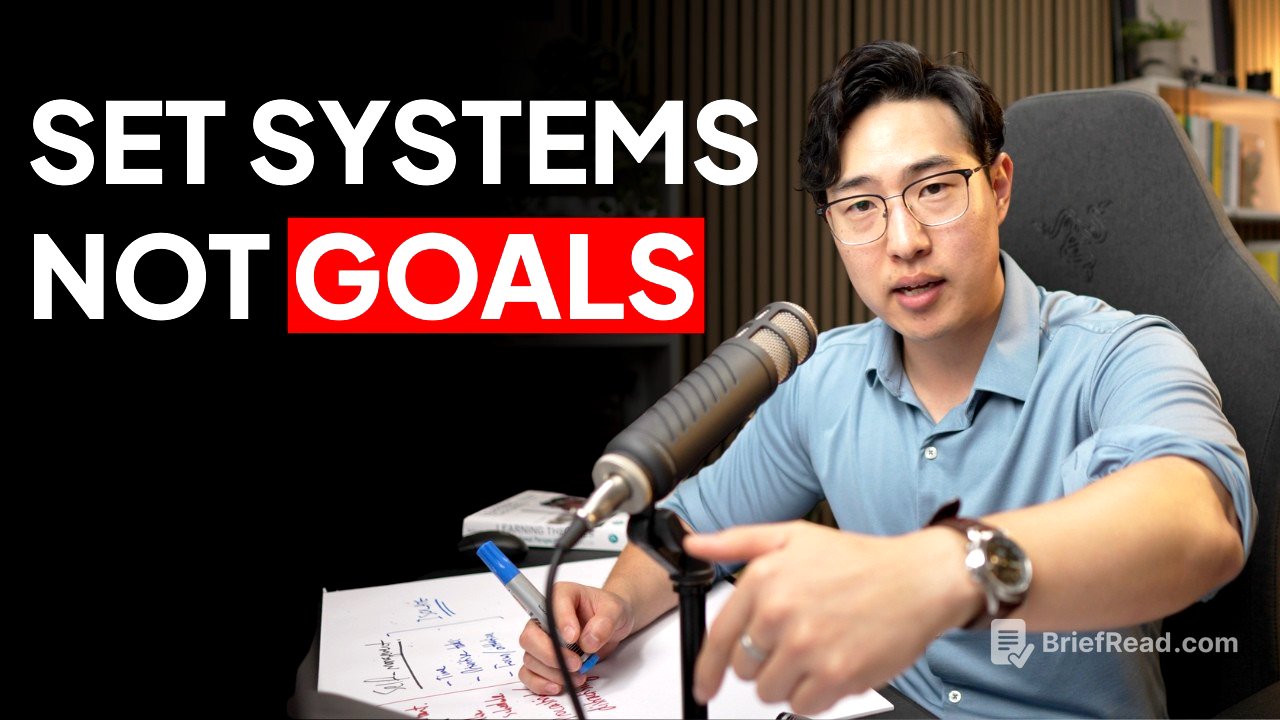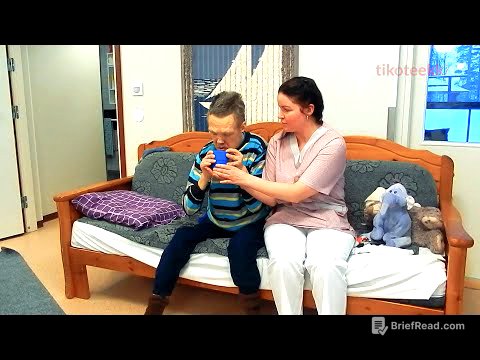TLDR;
This video explains how to balance work, learning, health, relationships, and hobbies by thinking in systems rather than relying on willpower and motivation. It introduces three key principles for building effective systems: holistic thinking, repeatability, and peeling the band-aid. By applying these principles, you can create sustainable processes that adapt to life's challenges and free up time for what truly matters.
- Thinking in systems reduces reliance on willpower and motivation.
- Three principles: holistic thinking, repeatability, and peeling the band-aid.
- Systems adapt to challenges and create more freedom.
Introduction: Balancing Life's Demands [0:00]
The video addresses the challenge of balancing a full-time job with continuous learning, health, relationships, and hobbies. It asserts that achieving this balance is possible by adopting a systems-thinking approach. The speaker, who has coached thousands of professionals, emphasizes that systems are the key to regaining control and avoiding the feeling of constant busyness without progress on important goals. The video aims to explain systems thinking and provide simple methods for building systems tailored to individual goals.
What is Systems Thinking? [1:04]
Systems thinking involves reducing reliance on willpower and motivation by creating processes that automatically lead to desired outcomes. These processes are chained together to form a system. Most people operate on intentions and tasks, like "I need to exercise," which are hard to realize when busy. Proactive individuals turn intentions into plans, such as "I'll read for an hour every evening." However, plans often fail due to fatigue or unexpected events, leading to frustration.
Principle 1: Holistic Thinking [2:50]
The first principle of systems thinking is to consider all factors influencing the success of a goal. This involves proactively anticipating potential failures due to tiredness or unexpected events and planning for them. When coaching clients, the speaker asks about past attempts and their failures, paying attention to both the actions taken and the responses to obstacles. Identifying potential barriers is crucial because the system must account for these factors.
Principle 2: Building for Repeatability [3:46]
The second principle is to design systems that work even on the worst days, minimizing reliance on willpower and motivation. Plans should be evaluated based on their repeatability under challenging conditions. Most plans require injecting motivation, violating the principle of repeatability. The goal is to minimize friction. The speaker describes a cyclical process of identifying high-effort tasks and finding ways to make them easier, while also considering potential obstacles.
Case Study: Chartered Accountancy Exams [5:05]
An example is given of an accountant studying for chartered accountancy exams while working full-time. Their initial plan to study after work failed due to traffic, tiredness, and family obligations. The common solution of "digging deep" is deemed unsustainable. Instead, the speaker suggests staying at work later to study, avoiding traffic and fatigue. This solution is then evaluated for potential drawbacks, such as disrupting family dinner times. Alternative solutions, like studying before work, are also considered, along with their potential impact on sleep. The process involves continuously bouncing between finding low-effort solutions and identifying potential reasons for failure until a workable combination is found.
Problem-Solving and Discomfort [7:09]
The speaker emphasizes that systems thinking is about solving a series of problems and finding a combination of solutions that work. Commitment to finding a solution is key. Solutions may involve discomfort, which is acceptable because it signifies a change from the norm. The discomfort of making a change is often less than the discomfort of not making the change and living with the stress and disappointment of not progressing.
Clarity and Adaptability [8:59]
Through this process, intentions and plans become clearer and more specific, covering contingencies. Individuals learn about themselves and how to make tasks easier. The approach to following plans and achieving goals becomes more fluid and adaptable, accommodating unexpected challenges rather than relying solely on willpower.
Newsletter and Final Principle Introduction [9:50]
The speaker mentions sharing tips and tricks for building systems in a free weekly newsletter. The final principle is introduced as the key to maintaining and evolving the system for life.
Principle 3: Peeling the Band-Aid [11:00]
The third principle involves removing "band-aid" solutions from the system. Band-aids are short-term fixes that don't address underlying issues, such as taking naps to combat tiredness without addressing sleep habits. While helpful in the short term, band-aids can overcomplicate the system and create conditions for failure. The goal is to remove limitations and conditions for success by solving the underlying problems, which often requires changing habits.
Habit Change as Part of the System [12:21]
Changing habits becomes another intention within the system. For example, while using naps and timers, the individual also works on improving sleep habits and attention span. This new goal is integrated into the system using the first two principles. This ensures the system is effective in both the short and long term.
Conclusion: Effort and Freedom [13:23]
The speaker concludes by emphasizing that systems thinking, while seemingly complex, involves directing time and effort in a way that is more likely to achieve goals and create more time and freedom.









